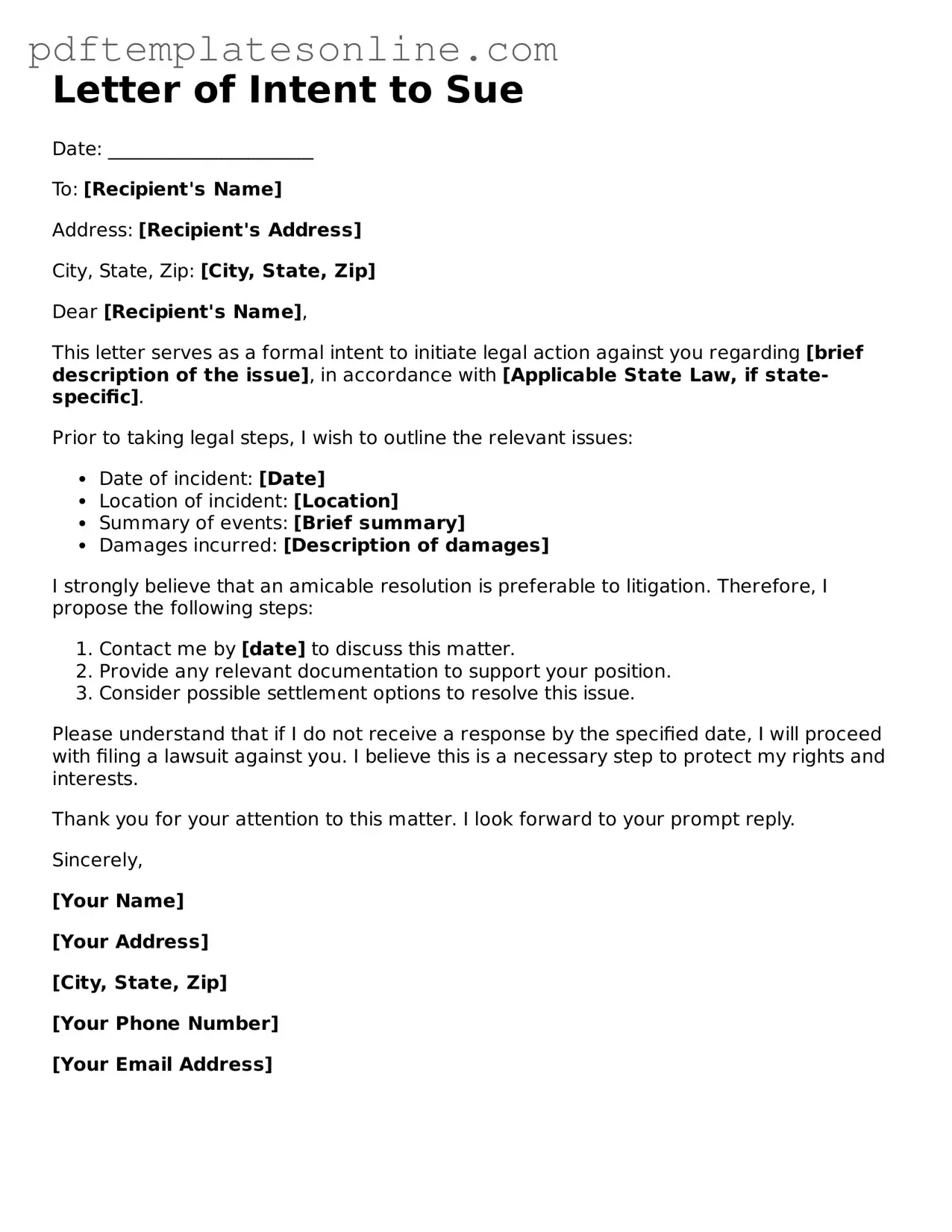Filling out a Letter of Intent to Sue form can be a daunting task, and it’s not uncommon for individuals to make mistakes during the process. One common error is failing to provide complete contact information. It is essential to include accurate details such as your name, address, phone number, and email. Missing this information can lead to delays in communication and may hinder the progress of your case.
Another frequent mistake involves not clearly stating the reasons for the intended lawsuit. It is important to articulate the specific issues or grievances that have prompted you to consider legal action. A vague description can create confusion and may weaken your position. Take the time to outline your concerns clearly and concisely.
Many individuals also overlook the importance of including relevant dates and timelines. Whether it’s the date of the incident or the timeline of events leading up to the decision to sue, providing this information is crucial. It helps establish a clear narrative and can strengthen your case by demonstrating the sequence of events.
Additionally, some people neglect to mention any attempts made to resolve the issue before deciding to sue. Including details about previous communications or negotiations can show that you have made a genuine effort to resolve the matter amicably. This information can be vital in demonstrating your willingness to find a solution outside of court.
Another mistake often made is failing to sign and date the form. A signature signifies that the information provided is accurate and that you are serious about pursuing legal action. Without a signature, the form may be considered incomplete, which could lead to complications down the line.
Moreover, some individuals do not keep a copy of the completed form for their records. Retaining a copy is essential for your own reference and can be useful in future communications with legal representatives or the court. It serves as a reminder of what you submitted and can help you stay organized throughout the process.
Lastly, it is important to remember that the language used in the form should remain professional and respectful. Using inflammatory or accusatory language can undermine your case. Maintaining a calm and composed tone reflects well on you and can foster a more constructive dialogue moving forward.
